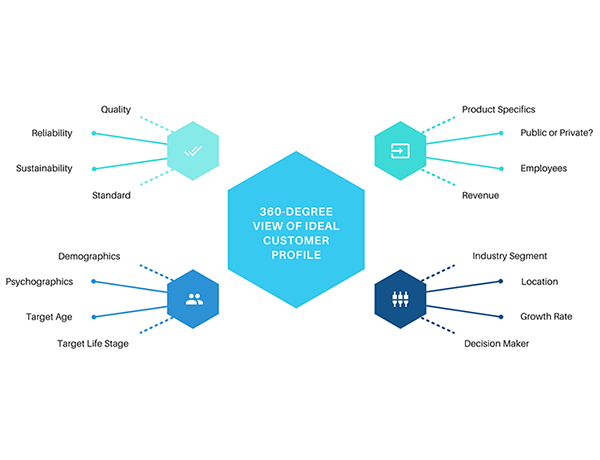KEY POINTS
- Collect the proper data requirements
- Establish standards for database content
- Adapt data profiling
- Ensure higher data quality with privacy-compliant contact information
- Validate database errors
- Discard unreliable contact information
- Prioritizing data reliability
- Verify your data quality with campaigns
- Gain complete control over the new database
- Unify marketing and sales data
How Poor-Quality Data affect B2B Marketing Approaches?
The quality of data employed in a data-driven choice directly impacts business. Poor data quality results in poor marketing decisions. Proceeding with critical business decisions based on poor data could result in catastrophic repercussions. Making poor decisions will give the impression that the company is inefficient. Instead of focusing on essential business activities, these inefficiencies may result in costly rework operations to validate and rectify data problems. The lack of data quality is recorded as the most prominent marketing challenge in over 54% of the companies. Low data quality breeds mistrust. In industries like finance, where regulations dictate trade and customer interactions, using incorrect data could jeopardize the money, effort, and reputation of your business, as well as reduce client retention.
Reasons for the necessity of improvised data quality:
Data quality is crucial for customized content When a tailored database is used for marketing purposes, the requirement for accurate and updated data is vital. Database tends to result in incomplete data, while some data gets lost due to the personalization filters. The completeness of the database is an essential factor in enriching the data.
Better decision-making can be achieved Higher confidence in statistical techniques is one of the main benefits of data quality. High-quality data is critical for gathering responsive and accurate insights from metrics, reporting, and analytics as B2B marketers attempt to make strategic decisions around new and existing content. Best-in-class companies are twice as likely to use data for predictive sales and marketing opportunities for identification. Poor quality data increases the risk of reputational and financial loss for businesses.
Marketing outcomes are affected Insufficient data frequently gets in the way of good results when marketers try to develop content that engages their target audience. Issue of data duplication occurs when the database is sourced from multiple sources. Outdated or irrelevant contact information could be present in the database, which results in lower quality leads, a decrease in open rates, and more unsubscribers.
\
How to Improve your Marketing Data Quality?
1. Collect the proper data requirements
The main reason for having high-quality data is to meet your customer needs. It can be tricky to present facts properly to comprehend what the client seeks genuinely. Data discovery, data analysis, and proper communication must all be leveraged to gain a clear view of these issues. Another crucial issue to consider when identifying data requirements is clear documentation of the requirements, with easy access and sharing.
2. Establish standards for database content
Setting guidelines before adding data to the CRM system, or any other system used for business, is one of the most important things to do before enhancing the data quality. Setting a standard for how data should appear as it enters the system makes a huge difference. Standards on using data for various decision-making activities will be included in the collection of guidelines. The marketing requirement varies for each B2B marketer according to the business ideas, which need to be considered to generate the most accurate database with better data quality.
3. Adapt data profiling
The process of analyzing and describing prospect information from an existing source is termed data quality profiling. It aids in identifying necessary corrective measures and gives valuable insights that can be communicated to the business to stimulate improvement strategies. However, this is not a one-time cleansing task. Data profiling should be done regularly depending on the available resources, data errors, and other factors.
4. Ensure higher data quality with privacy-compliant contact information
Data quality can't always be maintained from the start because the data source isn't always internal. Data assets are sometimes purchased from third-party sources with unknown levels of governance. This means that businesses need to find a credible data provider with reliable testimonials to receive deliverable and compliant marketing databases.
5. Validate database errors
Minor errors tend to occur, no matter how careful you are while generating your email list. It is critical to find and fix data list mistakes to increase the data quality. Manual data quality control is common; however, data profiling tools can make it easier. Many database vendors analyze data to identify any errors that need to be corrected and deliver a highly-verified authentic mailing list.
6. Discard unreliable contact information
It is critical to remove profiles that are unreliable from marketing campaigns automatically. This can be accomplished by omitting inactive profiles while reducing hard email bounces from your business database. You can avoid deliverability issues by automatically filtering unreliable profiles. Furthermore, you improve the open rate and make better conclusions about campaign results.
7. Prioritizing data reliability
The ability of a verified database to ensure data integrity through multiple approaches is a critical feature. When the volume of data, the variety of deliverables, and sources increase, the ability of the database system to store the entire data turns critical. The ideal data management approach would be using technological tools and processes to guarantee data integrity in these situations.
8. Verify your data quality with campaigns
It is feasible to build campaigns for data enrichment initiatives to improve data quality further. You can send an email requesting to check or update the data. These types of campaigns can also be used in email newsletters. Another example of a campaign to improve data quality is a reactivation campaign. It raises the count of dependable profiles in the database, improving your ROI and revenue rates.
9. Gain complete control over the new database
Data is usually obtained from outside sources in most businesses. The information could have come from a third-party source or been obtained by a separate organization. As a result, excellent data quality isn't always possible. A competent data profiling tool comes in helpful in these situations, as the application should be able to assess the data format and patterns, inconsistencies in each record, data value distributions and irregularities, and other relevant elements. Automating data profiling and quality alerts is vital when it comes to incoming data.
10. Unify marketing and sales data
The most effective way to increase the data quality is to integrate sales and marketing data. With better alignment between sales and marketing, both teams can assist in delivering the correct information at the right time. As a result, we recommend that you combine your business systems in order to consolidate all of your data in one place.
To wrap it up!
The task of advancing data quality can be complicated, but the effort invested in high-quality data can boost business and marketing success. B2B marketers who prioritize data hygiene concerns will see improved marketing results. As you go along, remember that the meaning of high-quality data differs according to each firm. Data providers such as InfoGlobalData can be utilized for a real-time updated, credibly sourced database for different business needs. Determine the purpose of your database, and then develop your data quality definition based on your business-specific goals and KPIs.



































